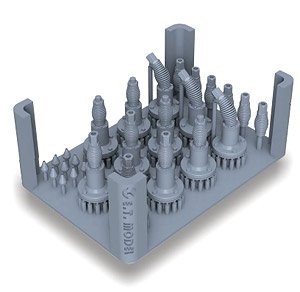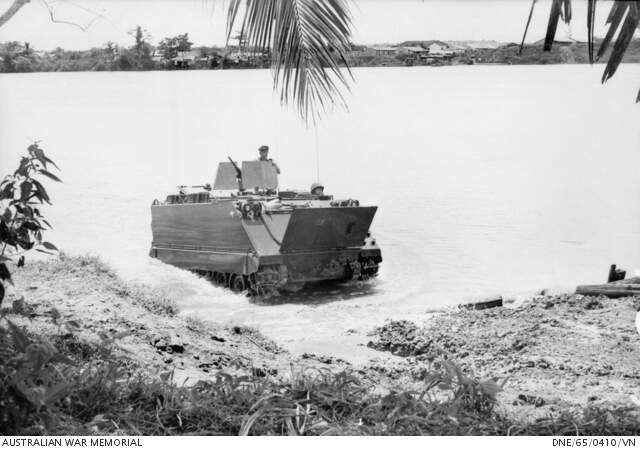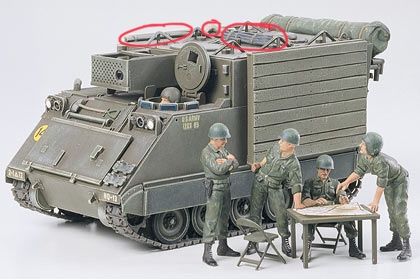E.T. Model set, with balls. This is the set I may be getting, more variety

And the more modern set from Trex

E.T. Model set, with balls. This is the set I may be getting, more variety

And the more modern set from Trex

Moved to the back today. Got 3 (period-correct) MRE cartons built, one on the table in there. Built the fuel can rack and detailed the fuel cans. Pic of that tomorrow.
Missing a 12 pack of Mountain Dew ……yes radios on the left upper shelf and a map board on the right side wall. If you can still get to it. The ridges on the ramp are usually the first to loose paint, and have a metallic show thru.
Inspiring me to get my 577 project out of the closet. Need to find a BCS terminal and printer, got the radios and other stuff.
Great builds and discussion here!
When it comes time to weather your model, note that the real trim vane is made of a simple sheet of plywood with an aluminum strip on top and bottom. Therefore, no rust.
Muddy, dusty, yes. Rusty, no.
The hull is also aluminum. Fittings may be steel.
When the track is properly tensioned, and the vehicle is sitting stationary on flat ground, the track lays on the second roadwheel behind the drive sprocket. In a motorpool, you can tell whether or not an M113 or M577 is properly tensioned at a glance.
The side skirts that sometimes are fit along the lower sides of the hull are made of hard black rubber held on to the hull with a metal strip at the top through which bolts are screwed into threaded holes in the hull. The rubber skirts normally weather to a dark gray. At the front and back ends of the skirts are metal plates. The plates were painted the same color as the hull. Some units never bothered fitting the side skirts. They are only needed for swimming or to help reduce dust (which didn’t really help reduce dust much at all). It was simply easier to access the tracks for maintenance, etc., without the skirts being mounted. For those units that did mount the skirts, I don’t remember seeing any unit paint over the skirts but perhaps some did. Check your references to be sure.
In 20 years of active duty with mech engineer units, I never saw anyone swim their M113s except as a demonstration at engineer school on one occasion in a pond - no moving water. And that vehicle was empty of any gear. Swimming an M113 was an invitation to sink a vehicle or drown some troops. Just not done. So, many units saw no reason to mount side skirts. And generally, if the M113s had no skirts, the M577s didn’t either.
The treaded floor panels inside M577s and M113s were normally bare aluminum. The panels are thick enough to be tough but left unpainted. I don’t remember ever seeing a painted floor panel in an M577 or M113. They got filthy, obviously.
The interior wall of the ramp is as you modeled it, painted and the paint on raised areas was normally worn away by foot traffic when the ramp was lowered. Whatever the color of the vehicle exterior, the ramp interior would be left in the original factory green, even if the exterior of the vehicle was painted desert sand.
The paint was known by its acronym “CARC”, an intensely toxic paint when still wet, designed to resist chemical agents, and therefore normally painted with spray guns by a paint shop certified to handle it in a specialized facility, not painted by troops. When those shops painted a vehicle, they typically spray painted the entire exterior in one session, with the ramp in the raised position during spraying. So, when units repainted into desert sand, the ramp interiors remained their original green.
When M577s were parked in an array that formed a field headquarters or command post known as a TOC (tactical operations center), specially fitted tentage was normally extended from the rear of the vehicles, connected to other M577’s tentage, and made as light tight as possible. If the security conditions permitted, the M577s’ ramps were usually lowered so that troops manning different M577s could easily talk to each other and coordinate operations. But, things, gear, and general “stuff” were not left on a lowered ramp. The ramp had to be able to be raised quickly in the event of an attack. And TOCs are big arty targets so troops took clear ramps seriously.
In most units I was assigned to, M577s kept their ramps up at night as a matter of SOP, but kept their ramp doors open. The raised ramp helped maintain some improved level of protection and light discipline while the open doors helped facilitate coordination between different M577s. In winter months or other very cold conditions (desert nights are cold), ramps were usually kept up day and night to help keep the vehicles warm inside.
When a TOC was in operation, engines were normally shut down to save fuel and help reduce heat signatures but generators were fully operating. M577 generators are very loud. A TOC was a lot noisier than anyone liked.
Hope something here is helpful.
Can’t wait to see more!
Cheers
Pack of Mtn Dew etc on order. The ramp shows some wear, but may need more. I’ll look for radios while waiting for the ramp winch to arrive from our own MikeyBugs.
ETA I’ve also got the ET Model antenna base set coming from Aussie.
Thanks for your input.
Welcome to 'Stralya" (well Vietnam actually):


…and yes, even here in Oz (well, East Timor actually), there is one careless driver in every crowd…

I drove the S-2 track in Germany for about a year in 1988. Most of my experience was similar to yours. We did not have CARC. We had the old enamel paint used for the MERDEC, made to look like the NATO 3 color by removing the tan part and just using green, brown, and black.
We usually kept the ramp down and horizontal by setting it on an oil can. There were only a few nights where the ramp was up, using just the door, for light security. The floors were unpainted alum. My track had both heaters mounted and working, so we could stay pretty warm.
Often to cut down on the noise, we would operate both 577s in the TOC using one generator. You are not supposed to do that, but we did anyway!
My memory is not what it used to be, so I checked back on my photos about the side skirts. They show one side with the skirt and one without. What? Did I actually run it like that? I don’t remember.
A couple of times we set up the OE-524 antenna. A real pain in the ass! If you didn’t get the guy wires right the whole thing would collapse!
We never swam the vehicles. I did a river crossing exercise once, just me and the LT. I forget what river it was, it looked huge. We crossed on a pontoon bridge. No one else wanted to go on that trip, that’s why it was just me and the LT. Cowards!
Ken
I’d go AWOL before I swam a 113! ![]() joking, sort of…
joking, sort of…
Remember, you’re only required to obey a LEGAL order. Asking someone to swim a M113 is in ILLEGAL order. Sort of.
In all reality, the 20 year old me would jumping for joy at doing it! Not so much the 58 year old me ![]() I’m older and wiser now. Sort of…
I’m older and wiser now. Sort of…
I swam an M901 ITV on an FTX. Add 2 tons of ITV turret to the top of a 113. I was TC but I insisted on driving. My driver, gunner, and loader all sat on the turret, ready to swim for it. It was across a lake, so there was no current. I swear there was only 3 inches of freeboard. I got wet twice. Talk about pucker factor. Never tried it again.
Damn!
Very nice built! Please note the side skirts, you put them too far back in length and it is the older version.
Andreas
Gino will confirm, as I read it in a previous post, the original batch of M577’s were converted from M113’s on the production line, hence the need to weld a slab or two to the hull sides.
Later production models were ordered, & these were built with the sides cut as one piece, hence no welds.
German Autobahns, I did 1103 km on them in 1 week in June this year.
‘Most’ sections have strictly enforced limits, but there are large, clearly marked sections where the ‘advisory’ is 130kmh/80mph…
You ‘can’ exceed these at will, in the allowed sections, but i’m told your insurance will not be valid, & IF you cause an accident, you are personally liable for ALL the costs. Not something i did in a rental VW Tiguan shed.
I did mostly 100-120kmh, & got passed at speed mostly by Mercs & Audis.
German drivers are very disciplined ![]()
Yes, I can confirm the above. Many of the original M577s have been rebuilt over the years as well and went on to become M577A2s and M1068s. So, you can see newer M577s with weld seems on the sides as well as without the weld seems. Often, you will see two next to each other and one will have them and the other will not.
M577A2 w/weld seam showing.
M1068 (M577A3) w/weld seem showing.
A quick and dirty shortcut to a decent 577 is to bash the Tamiya 577 with a Tamiya Desert Version M113. It has the proper trim vane, mud guards, heater vents, exhaust and engine deck details. That’s what I did. And just to point out something meaningless, Tamiya provides the cable that’s used to run from the generator to the vehicle, all one piece, and the block and tackle to move the generator with the boom, also one piece, all mounted on the top of the vehicle

Might go that route next time, looks very nice. I found the davit arm, mounting it and the genset cable as per. I just want to find out more about Andreas’ post re the “old type” side skirts. Did I maybe use the Tamiya skirts?
The Tamiya M577 James posted above has the old type (original) side skirts. They come down lower and have a solid front portion.
The M577A2 I posted above has the new style. They are shorter and have a step cut into the front.